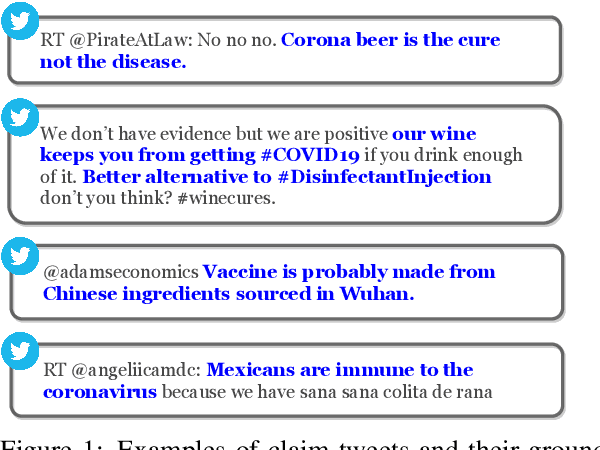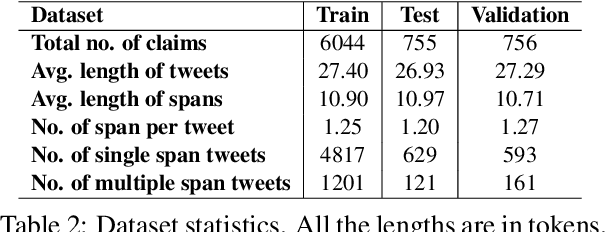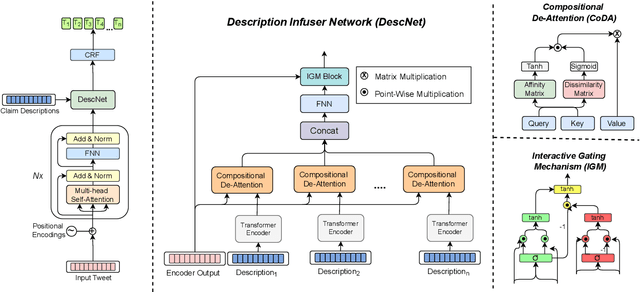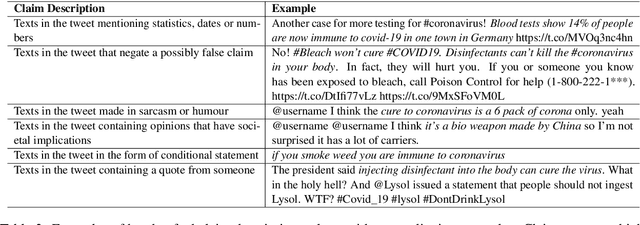Empowering the Fact-checkers! Automatic Identification of Claim Spans on Twitter
Paper and Code
Oct 11, 2022



The widespread diffusion of medical and political claims in the wake of COVID-19 has led to a voluminous rise in misinformation and fake news. The current vogue is to employ manual fact-checkers to efficiently classify and verify such data to combat this avalanche of claim-ridden misinformation. However, the rate of information dissemination is such that it vastly outpaces the fact-checkers' strength. Therefore, to aid manual fact-checkers in eliminating the superfluous content, it becomes imperative to automatically identify and extract the snippets of claim-worthy (mis)information present in a post. In this work, we introduce the novel task of Claim Span Identification (CSI). We propose CURT, a large-scale Twitter corpus with token-level claim spans on more than 7.5k tweets. Furthermore, along with the standard token classification baselines, we benchmark our dataset with DABERTa, an adapter-based variation of RoBERTa. The experimental results attest that DABERTa outperforms the baseline systems across several evaluation metrics, improving by about 1.5 points. We also report detailed error analysis to validate the model's performance along with the ablation studies. Lastly, we release our comprehensive span annotation guidelines for public use.
 Add to Chrome
Add to Chrome Add to Firefox
Add to Firefox Add to Edge
Add to Edge